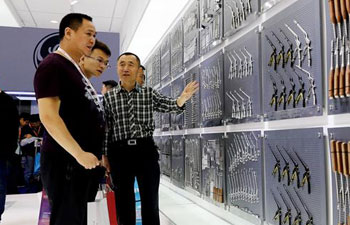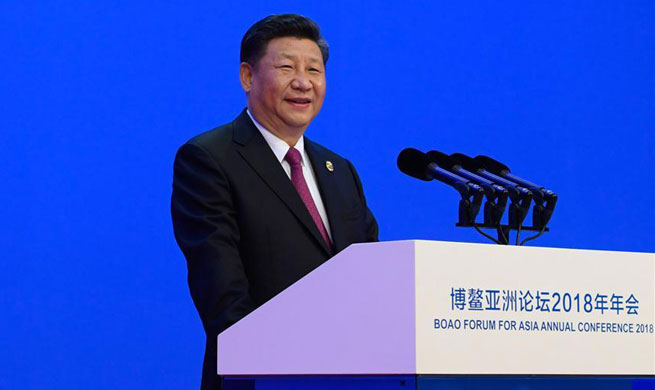YINCHUAN, April 12 (Xinhua) -- In a classroom in rural northwest China's Ningxia Hui Autonomous Region, students turn on a large screen display, log in, and greet their teacher, who is 170 kilometers away in the regional capital Yinchuan.
During the painting class, Mu Yanan and her 47 second-grade classmates at Kuankoujing CNPC Hope School stare at the screen attentively.
"Who can give me an example of a symmetrical shape?" asks the teacher on the screen.
Mu immediately raises her hands to answer: "Bee!"
A storm of applause surrounds her.
The live-streaming course is the result of Ningxia's lesson-sharing platform established at the end of last year. The platform, which includes 200 schools, aims to narrow the gap between the quality of education in rural and urban areas.
Mu's school was a pioneer. It paired up with the No. 21 Primary School in Yinchuan to launch live-streaming courses in 2015, allowing urban students to share resources with their rural peers.
Depending on the day's schedule, live-streaming classes can include anything from arts, crafts and music to English and mathematics, all taught by teachers from urban schools.
"It's very interesting to interact with teachers and students in Yinchuan via the internet," said Mu. "I can get a glimpse of the world beyond my county."
"By sharing resources, we hope regional education will achieve balanced development," said Guo Kunyu, deputy head with Ningxia's regional education department.
Funded by China National Petroleum Corp. (CNPC), the country's largest oil and gas producer, Kuankoujing school has nearly 1,400 primary and middle school students, but only four full-time music teachers and two art teachers.
According to Wan Zhanwen, principal of the school, some Chinese language teachers have to work part-time to teach painting.
Kuankoujing's situation is not uncommon for China's rural schools, which lack teachers skilled in certain subjects and have a hard time keeping good teachers.
"Technology provides an alternative to improve the quality of teachers and make urban-rural education more equal," Wan said, adding that all of the school's 27 classes have been equipped with interactive whiteboards and broadband network.
As a part of the Chinese government's push to provide better connectivity to rural schools, live-streaming lessons have been launched across the country.
In Gansu Province, more than 64,000 classrooms in poor rural areas were equipped with screen displays and webcams to make live-streaming lessons possible by the end of 2017.
The benefits of the technology go beyond just learning about the arts. It also helps to make rural students more confident in their academic abilities.
Mu's father is a truck driver who supports the family of five with his monthly wage of 5,000 yuan (800 U.S. dollars). For the family, education is the only way they can take an active role in shaping their future.
"My daughter speaks and smiles more, and is performing better in school," said Mu Changjun, the father. "I'm happy to see that she is more confident now."



















